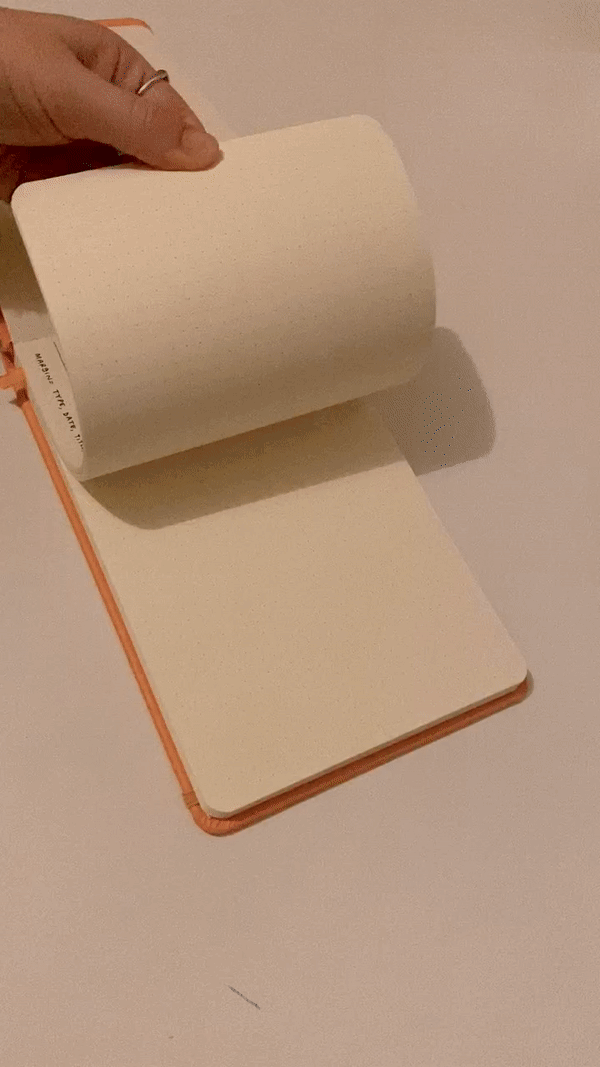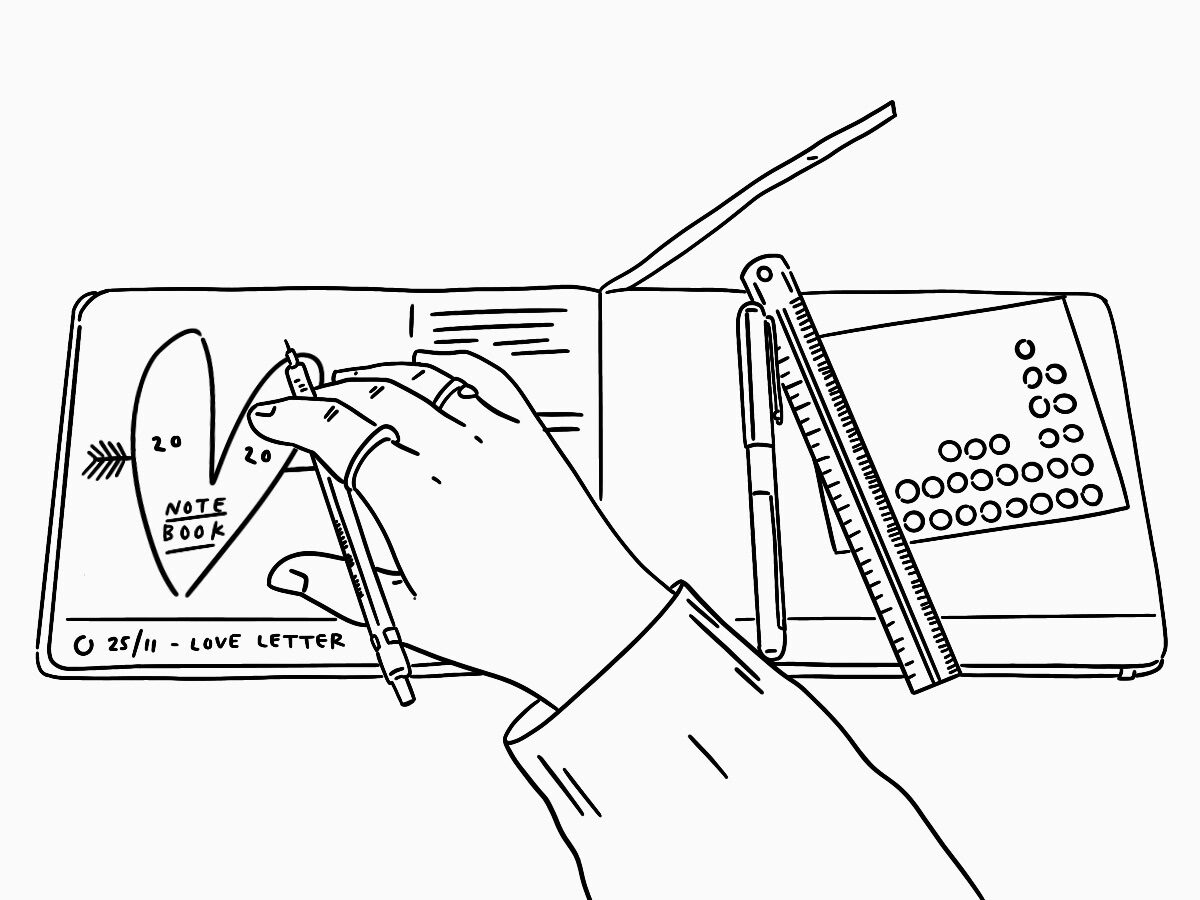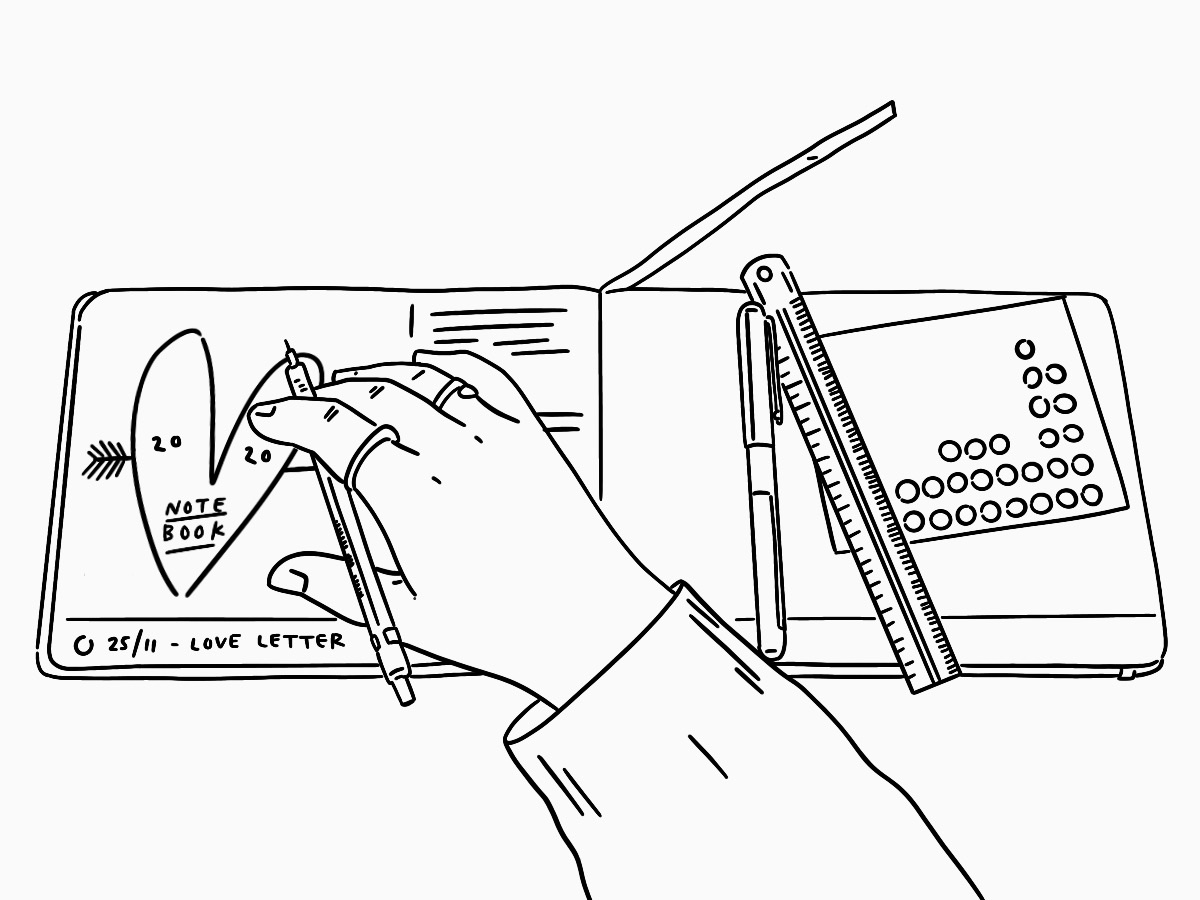While there are certainly pros to working at home, I have really struggled with staying engaged on the endless video calls that now make up the majority of my working days. With everything being mediated by a screen I’ve missed the physical nature of workshops, research and even just being in the office.
The one thing that’s really helped recently is taking physical notes.
I’ve been a handwritten notes person for as long as I can remember, but whenever I’m stressed or tired it’s a habit that can slip. Unfortunately, that’s usually when I need my scribbles the most. There’s catharsis and putting your thoughts on a page. There’s also a huge benefit when your memory is shot because of anxiety to being able to go back through those thoughts and not have to hold them in your (scattered) brain.
Unsurprisingly, when lockdown started and everything in my head started to fall to pieces a little bit, my note taking fell away too.

That was until I watched this notebook video from Megan Rhiannon. Megan uses her notebooks far more consistently and in far cleverer ways than I do, as they’re a support tool for her autism. But there was something about how she talked about her notes, and the way she organised them that reminded me of my love for notetaking.
So, in the manner of all great new endeavours, I bought a new notebook. A new notebook that was exactly like the other notebooks I’ve used. I will probably go to my grave with a Rhodia Webby clutched at my side.
I bought a new notebook and set it up to be the perfect notebook for me to use exactly how I wanted, no pressure of anyone looking over my shoulder. It’s got margins for titles, dates and to dos. Inspired by Megan, it’s got coloured dots to categorise, because this new notebook isn’t just for work notes. It’s got space to draw and plan, to sketchnote and to take longhand minutes of research sessions.
It’s got everything I love and it’s been so good for my mental health.
I say it’s been great for my mental health not just because of the memory and emotional support writing things out gives, but also because it gives me something physical to ground me when I can’t breathe for video calls. It reminds me I’m real and this is all real, because it’s tactile.
I wanted to share some of the things that I think went into this being the notebook set up I think I’ll use for years going forward, because I know how hard it is to find something that works. There’s no substitute for trying things out and seeing what sticks but these are my top tips.

Make it easy
I see people with really fancy journals with collages and calligraphy and they’re gorgeous. I’ll admit I’m envious. But I’ll also admit that I will never ever have one of those journals, because it’s more effort than it’s worth for me. It should be easy to pick up your notebook and get going. I set out my margins in advance. Ruling off sections and only worrying about a title in the margin mean I can get going right away. Feel free to indulge in some new stationery, especially if you can shop small for it, but in my experience you have to play to the tools, strength and time you’ll have to hand in the moment.
Make it something you enjoy
If you’re going to make a habit of notetaking, it’s much easier if you enjoy doing it. I love to add silly little pictures to my notes so I make space for it; I never got on with lined paper because it didn’t. I love the feeling of writing in a ballpoint pen on the specific paper I had; I got frustrated by the notebook where I decided to only work in mechanical pencil because it lacked that. I love adding those little coloured dot stickers, each one feels like a reward. It’s okay to have fun in your notes, even work notes, in fact I encourage it.
Make them quick to review
You should be able to go back through your notes and know what they’re talking about. That sounds obvious. But if I had a page for every time I’ve had important bits on the corner of a page or not been able to quickly flick to a dated note, I’d have a Rhodia as thick as Moby Dick. That doesn’t mean that you have to go by date, or in columns, vertically or horizontally. It means know why you’re using your notes, think about what you’ll need to find or sort later and make it easy to find.


